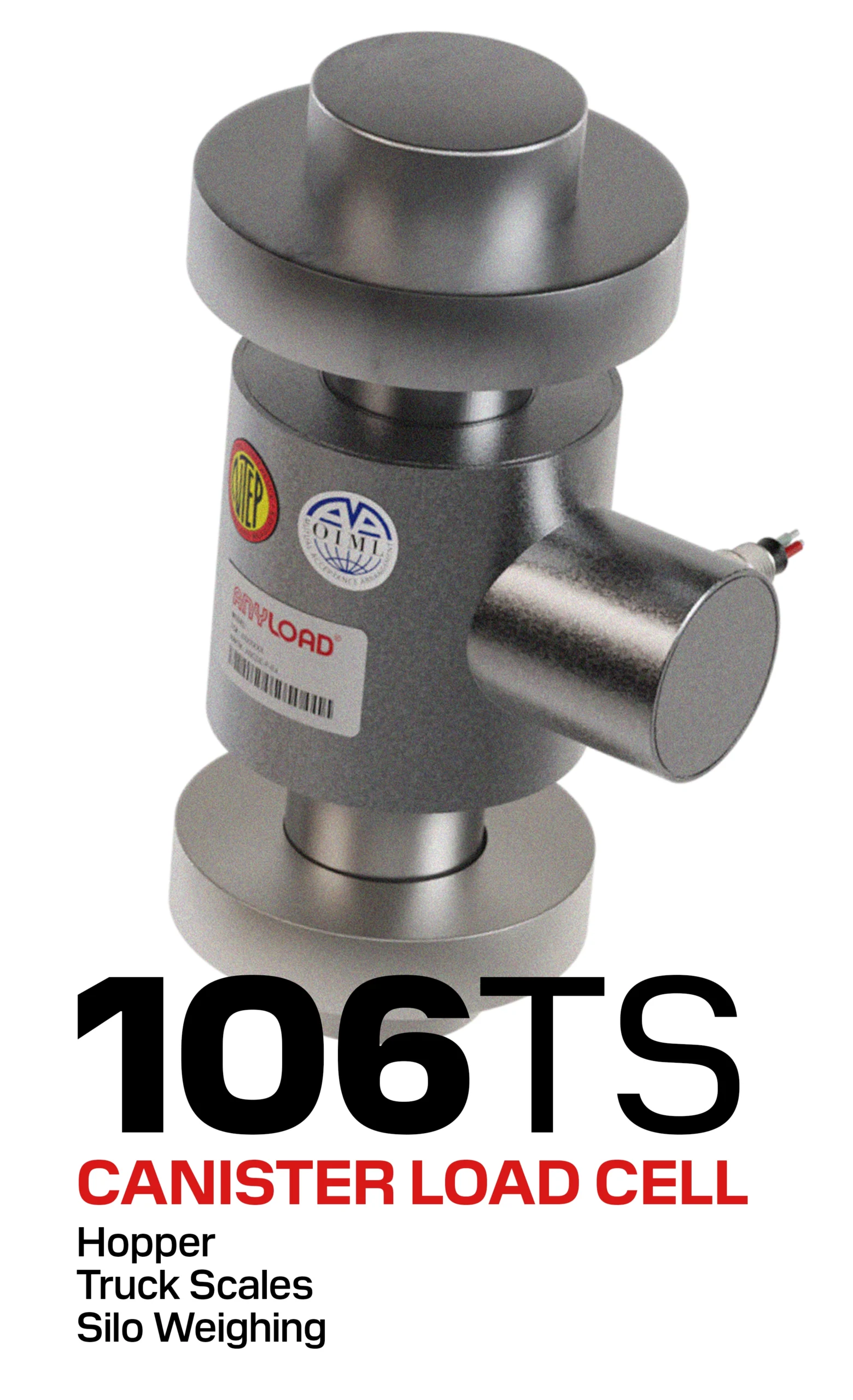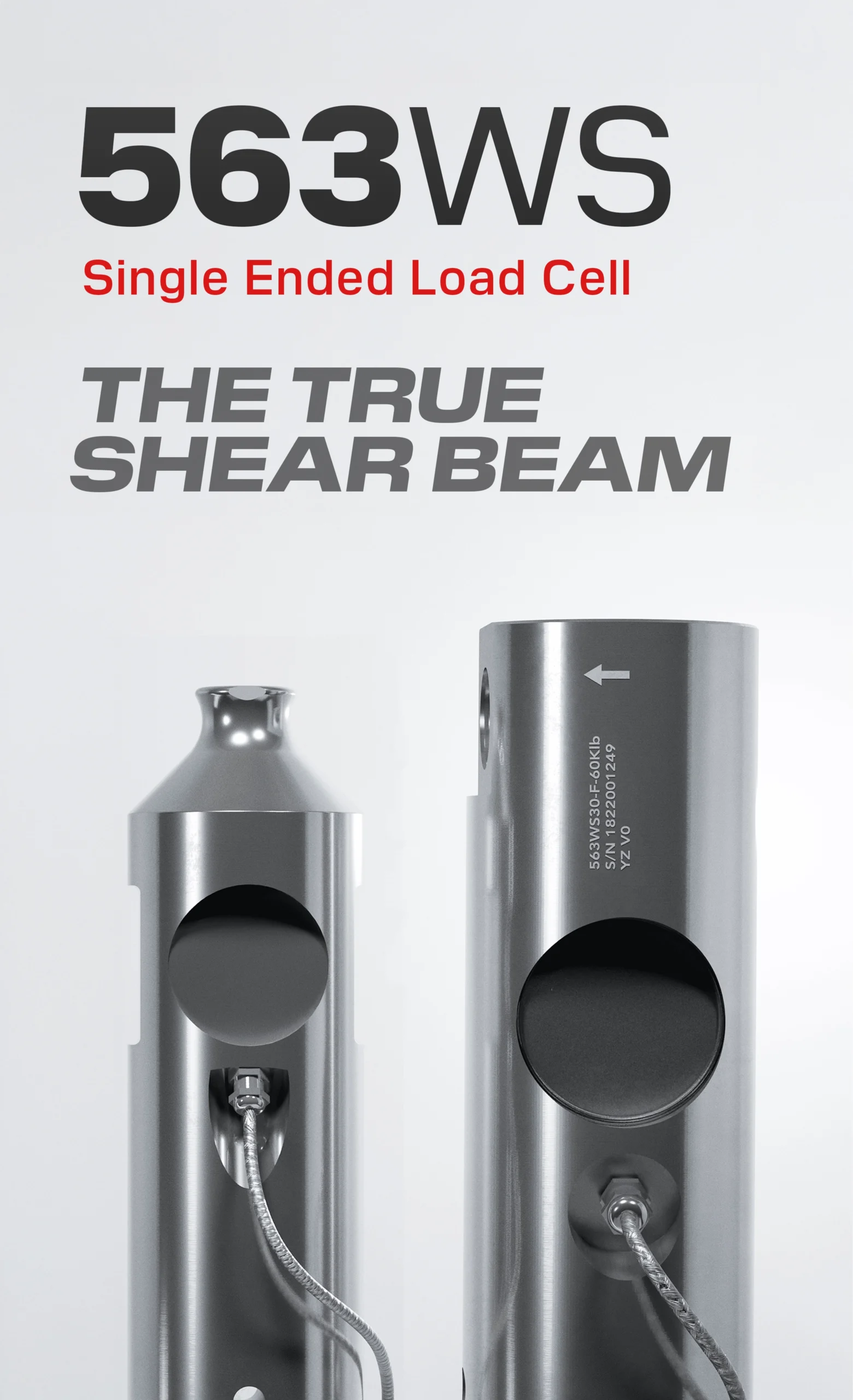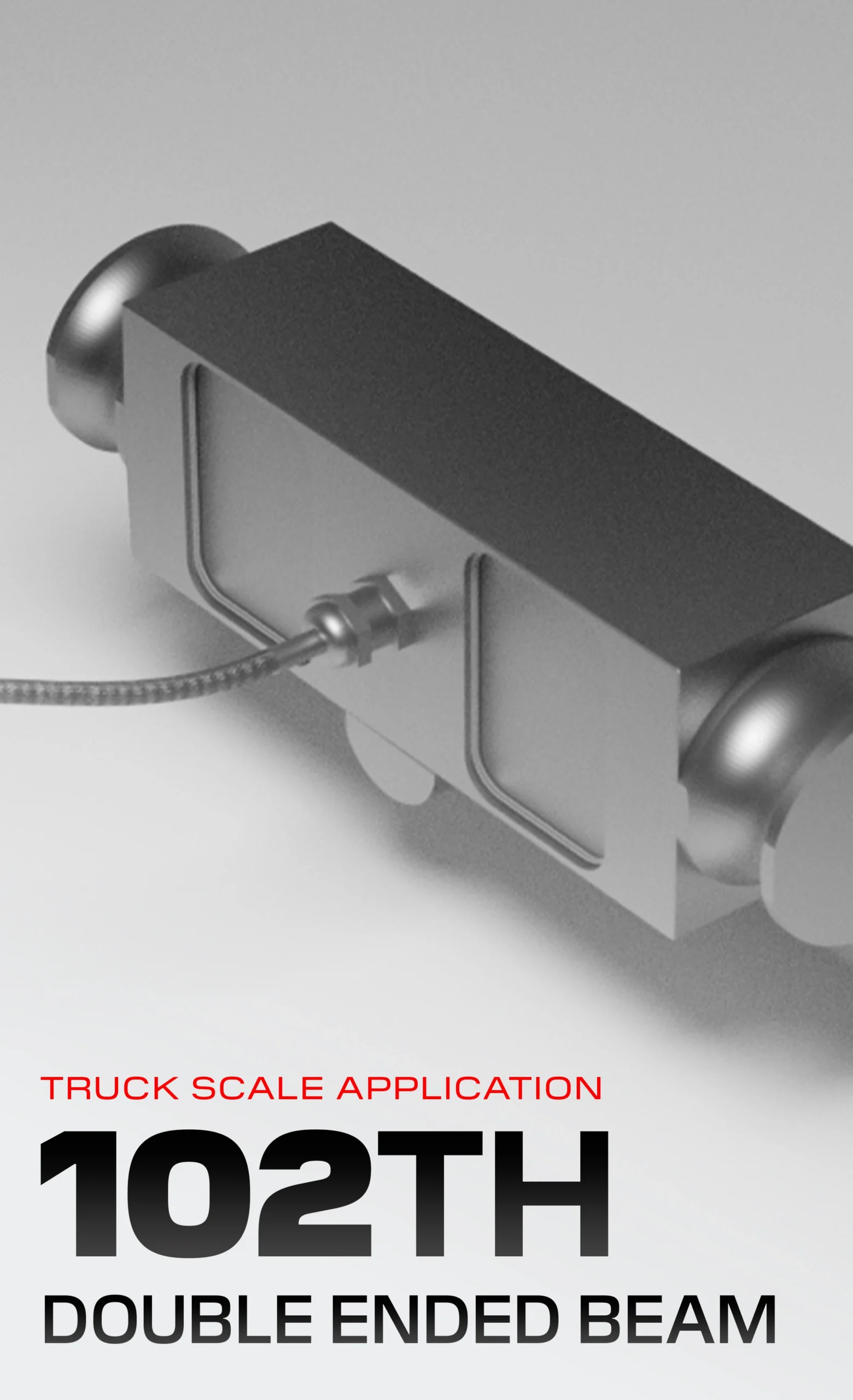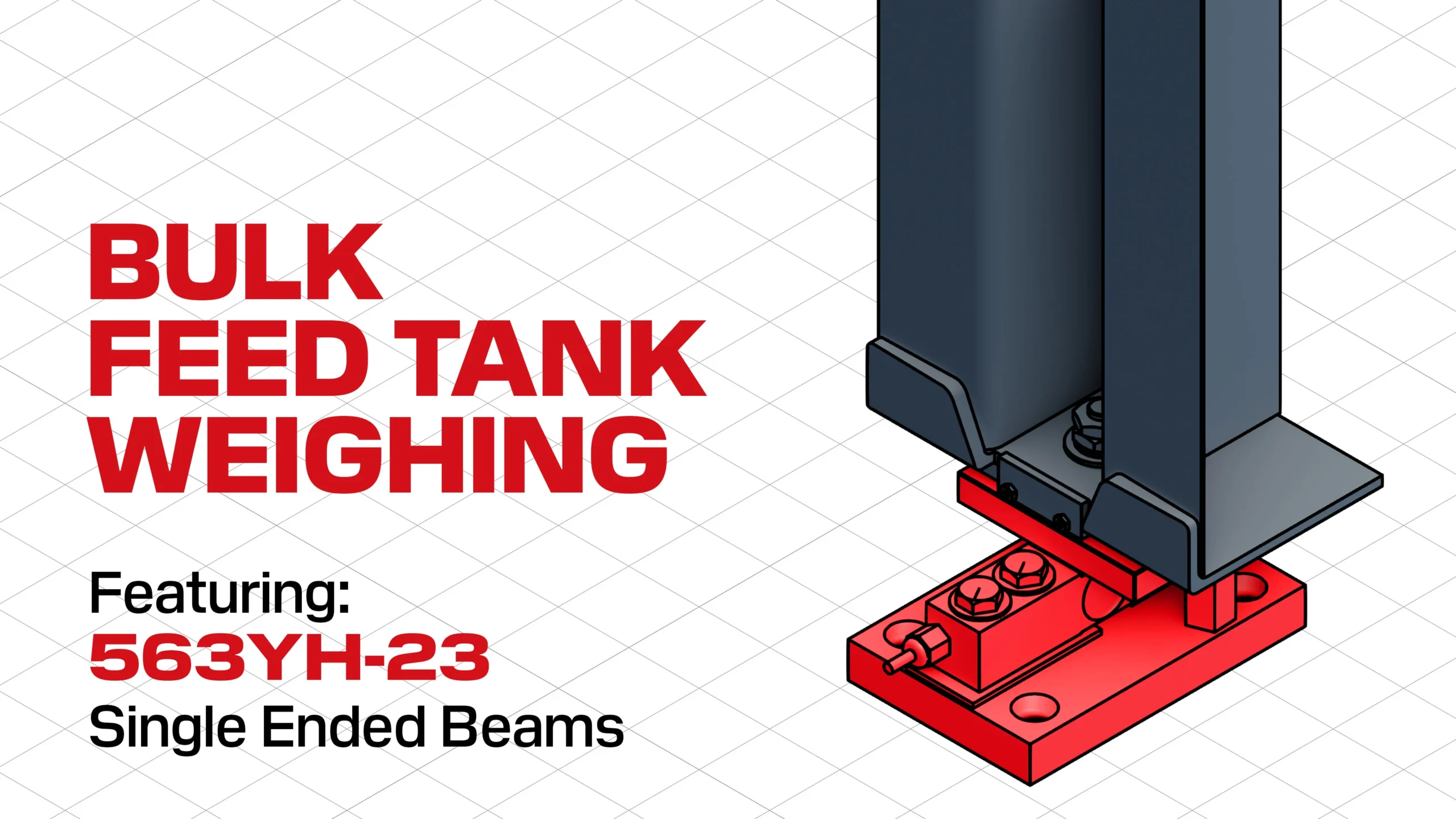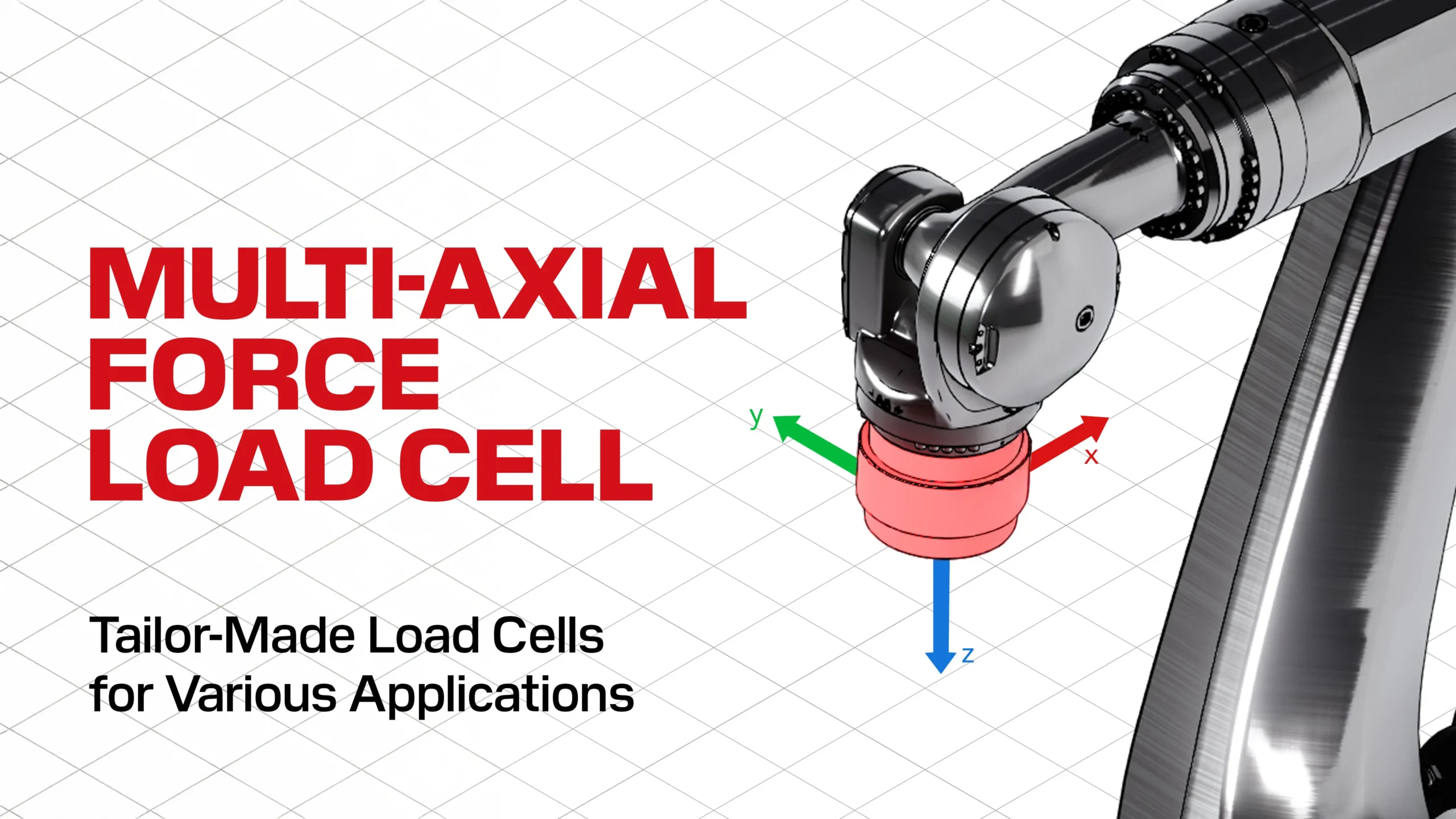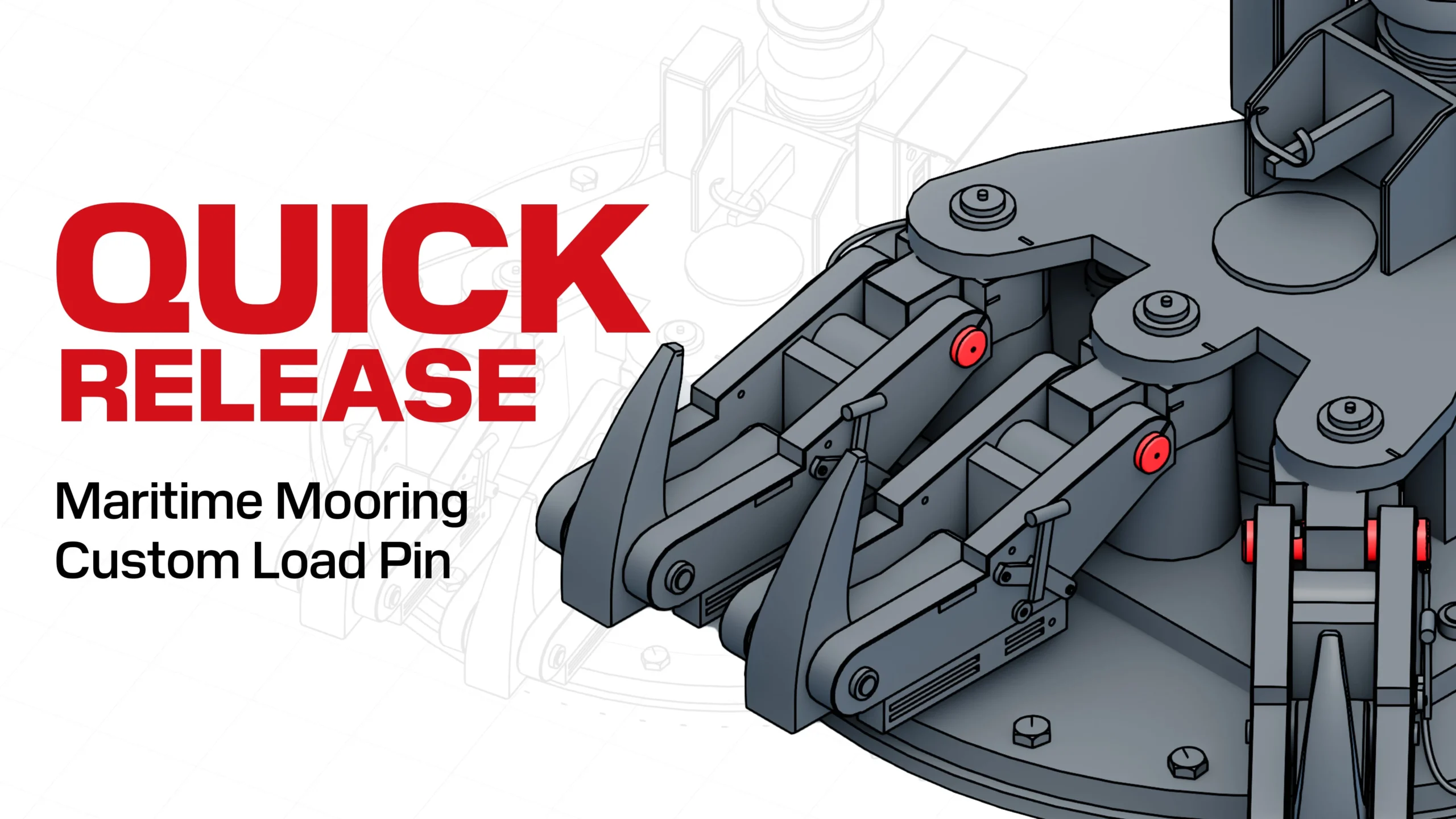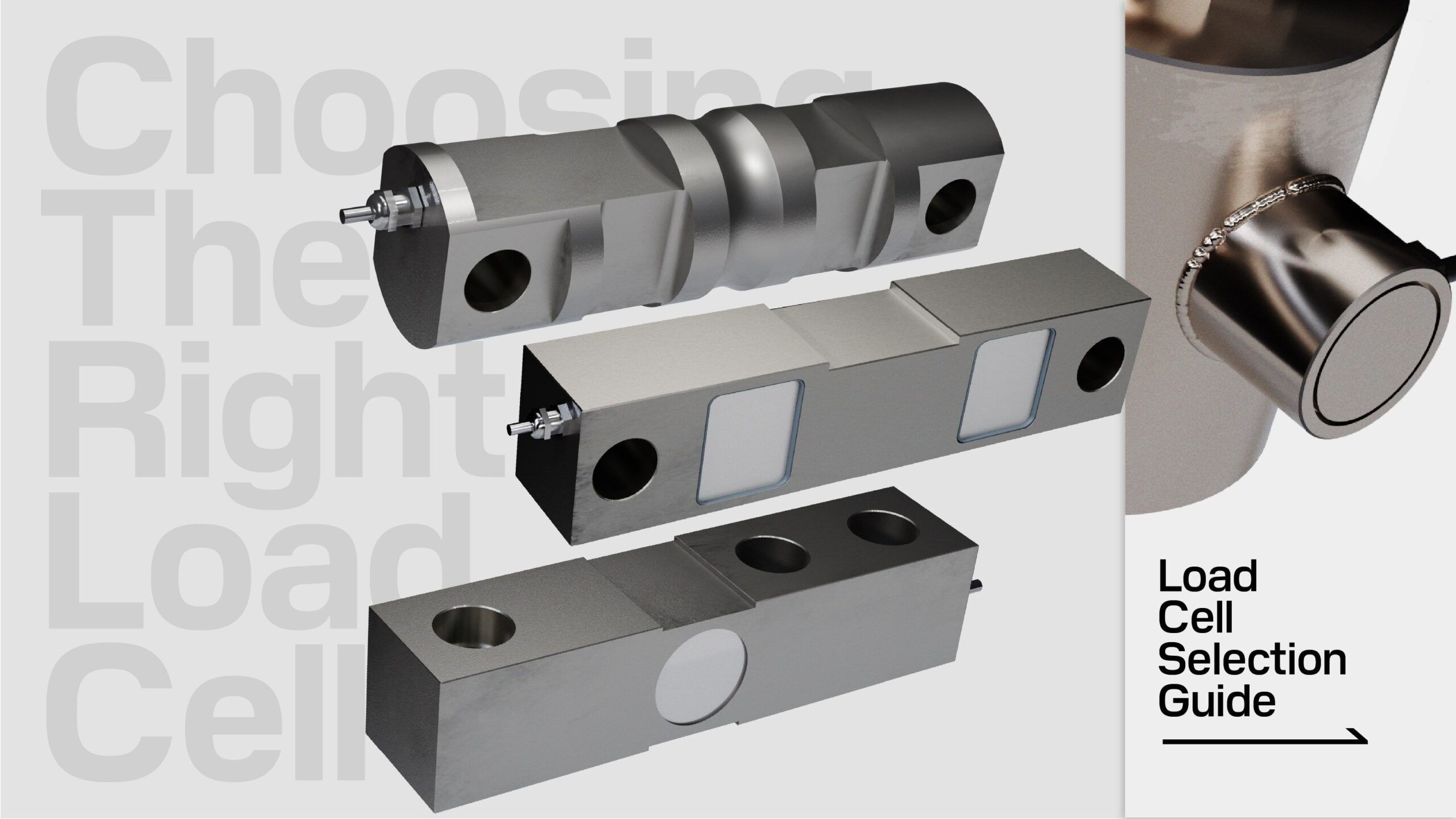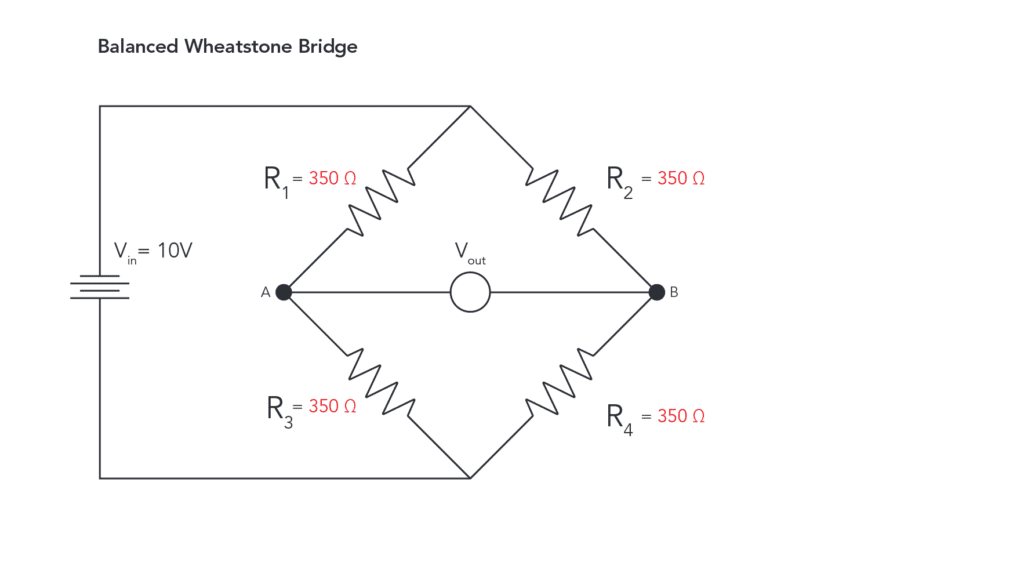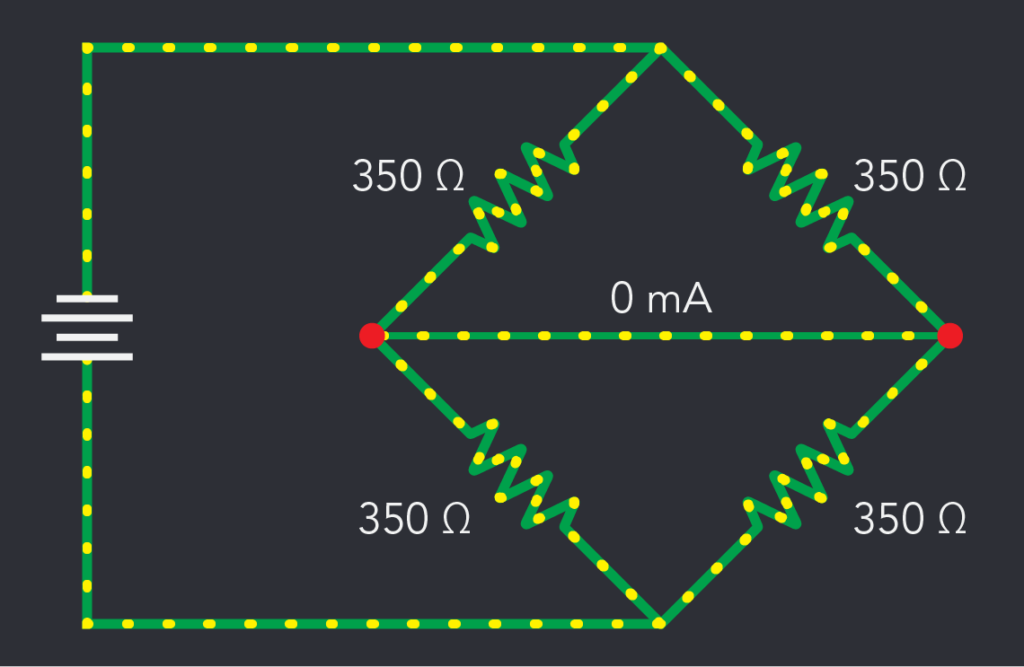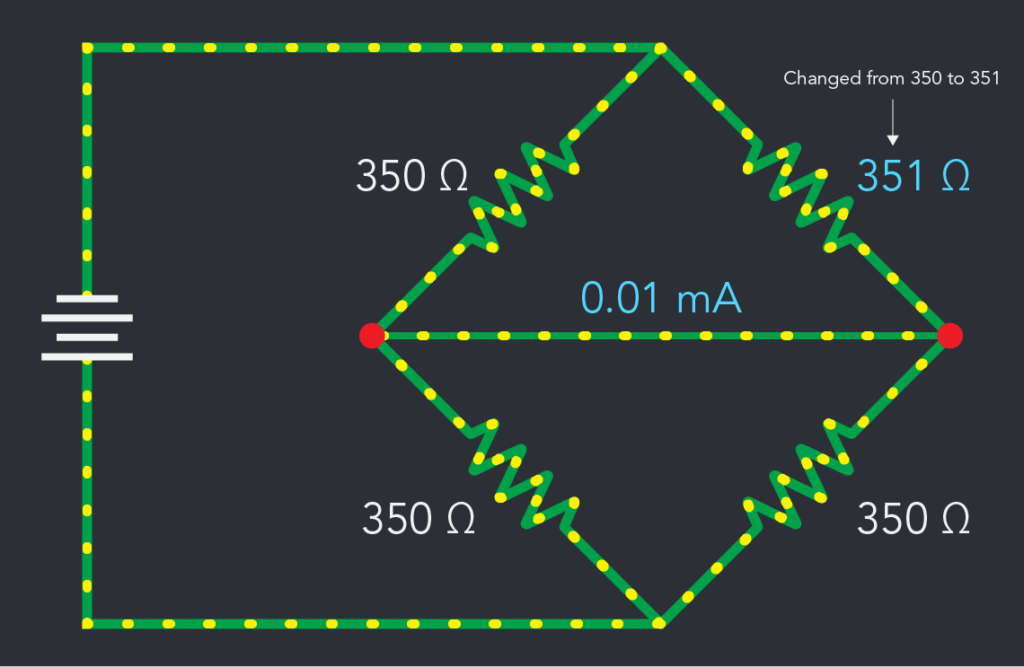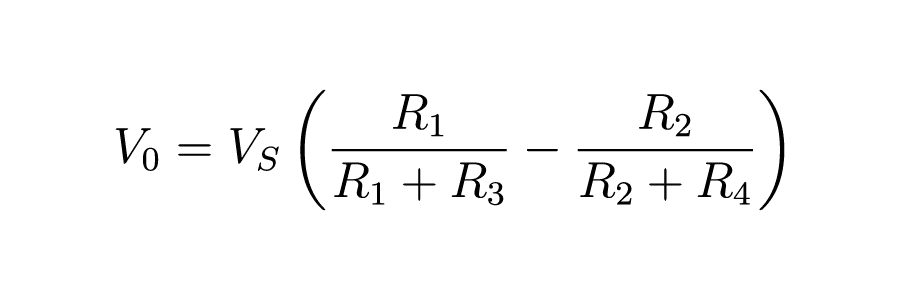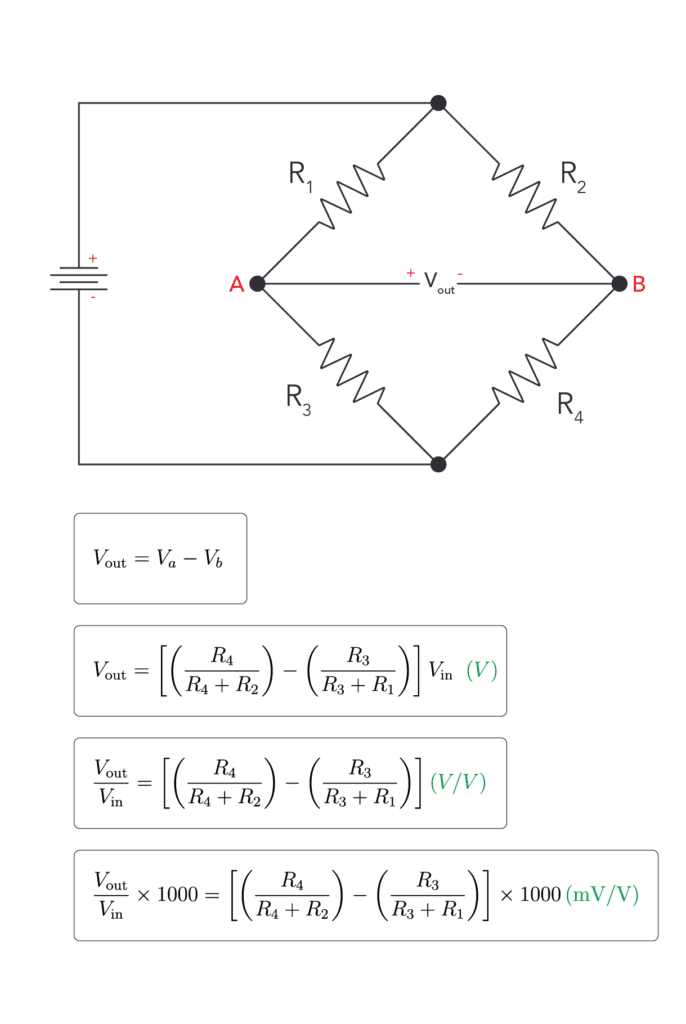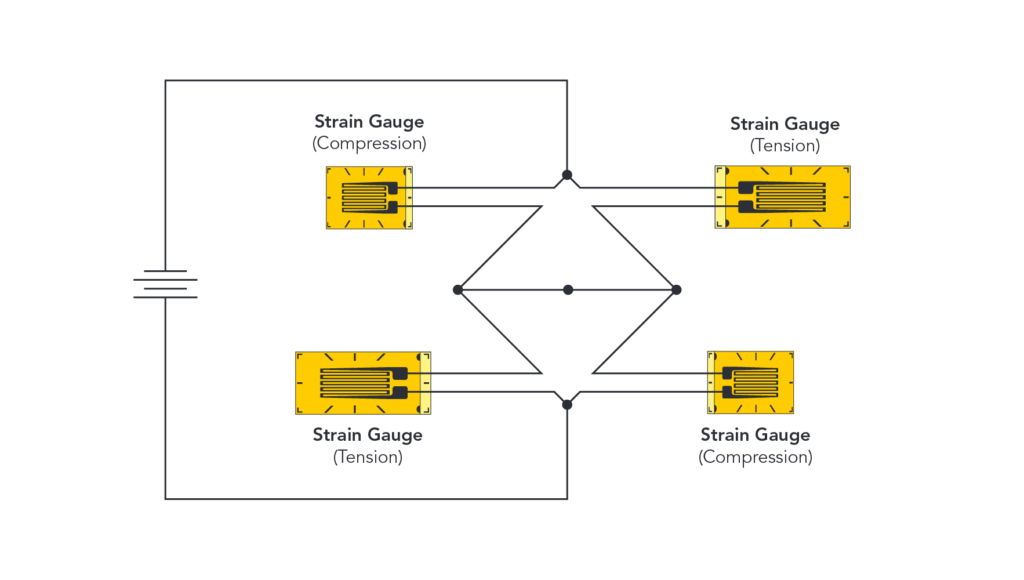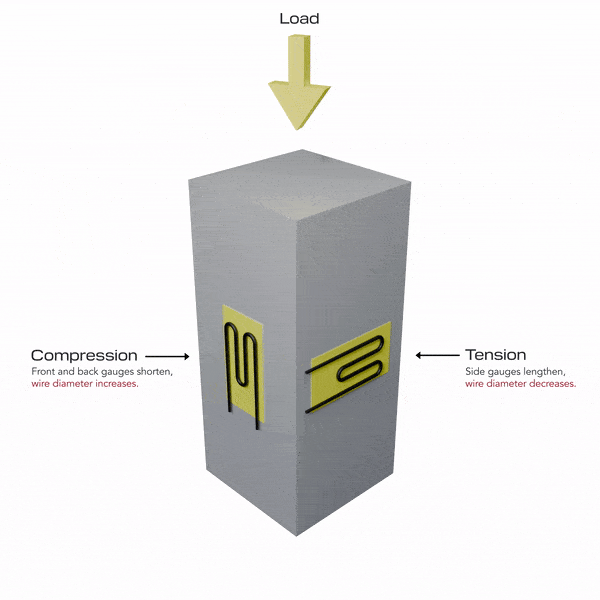Wheatstone Bridge
Last Updated On • 9 min read
1. How Does a Wheatstone Bridge Circuit Work?
A Wheatstone Bridge is an electrical circuit used for precisely measuring resistance. It consists of four resistors arranged in series along two parallel arms bridged by an ammeter or voltmeter.
This bridge circuit is “balanced”.
The current flowing in the R1 / R3 branch is equal to the current flowing in the R2 / R4 branch because all resistors are equal in their resistance values.
There is no voltage difference between points A and B potential difference between the midpoints will be zero.
For a bridge to be balanced (no output voltage, Vout = 0)
2. The Versatility of Wheatstone Bridge Circuits
Wheatstone bridge circuits are utilized in various applications beyond strain gauges and load cells, thanks to their ability to precisely measure electrical resistance changes. Some common applications include:
1. Temperature Sensors (Thermistors and RTDs): Wheatstone bridges are used with temperature-sensitive resistive devices like thermistors (thermal resistors) and Resistance Temperature Detectors (RTDs) to measure temperature changes with high accuracy.
2. Humidity Sensors: Some humidity sensors use resistive or capacitive materials that change properties in response to humidity. A Wheatstone bridge can measure these changes, converting them into a readable electrical output indicative of moisture levels.
3. Light Sensors (Photoresistors): In light-sensitive applications, photoresistors (whose resistance changes with light intensity) are incorporated into Wheatstone bridge circuits to create highly sensitive light detection systems.
4. Force Sensors: Similar to load cells but used in different contexts, force sensors employing Wheatstone bridges can measure forces such as impact, touch, or interface pressure between surfaces.
5. Gas Sensors: Certain gas sensors operate with materials that change resistance when exposed to specific gases. Wheatstone bridges can measure these resistance changes, allowing for the detection and quantification of gas concentrations.
6. Piezoelectric Sensors: Used for measuring dynamic changes like vibration and acceleration, piezoelectric sensors can be part of a Wheatstone bridge to convert mechanical stress into measurable electrical outputs.
These applications leverage the Wheatstone bridge’s sensitivity to small resistance changes, enabling the precise measurement and monitoring of various physical and environmental conditions.
3. Wheatstone Bridge in a Load Cell
A strain gauge is simply a variable resistor—a resistor that is able to have its electrical resistance adjusted. In a load cell’s Wheatstone Bridge, one or more of the resistors are strain gauges.
When the bridge circuit is balanced, with all resistors at the same electrical resistance, a baseline can be established. A balanced circuit with zero output detected by the ammeter indicates that there is no load being applied to the load cell.
With a zero baseline established, the load cell can thus accurately measure applied loads.
Strain gauges are bonded to strategic locations onto the load cell element (a metal block).
Here, a simplified example (see: Figure 3.1) shows how a load cell can be assembled from four strain gauges applied in a Wheatstone Bridge circuit to the element.
Converting the ammeter readings to pounds or kilograms effectively creates a rudimentary scale, capable of providing measurements of weight.
4. Why are Bridge Circuits Used in Load Cells?
Modern load cells integrate Wheatstone bridge circuits, typically with four interconnected strain gauges, not only as a cost-effective alternative to sourcing precision resistors with precisely identical resistance values but also for significant performance benefits.
Enhanced Precision:
Voltage drops across the strain gauge can be compared to voltage drops across a similar resistance in the other strain gauges for the same excitation voltage, instead of being compared to the much larger excitation voltage itself.
Increased Signal Resolution:
Output is maximized with four strain gauges, increasing the resolution of the load cell. If each strain gauge outputs 0.5mV/V, a bridge with only one strain gauge would have a variance range of 0.5mV/V. With four strain gauges, there is a variance range of 2.0mV/V. A larger sampling size allows for more accurate measurements to be derived.
Thermal Stability:
When the temperature changes, it affects all the resistors in the same way. Any resulting changes in resistance will cancel each other out. Therefore, any output alterations are more representative of actual mechanical loads rather than thermal variances.
Improved Fidelity:
By deploying four gauges, the bridge circuit can simultaneously monitor two areas under compression and two under tension, capturing a more comprehensive picture of the deformation occurring in the load cell. This multi-point measurement translates to a higher fidelity reading of the applied load, ensuring accurate weigh-ins and force calculations.
Cancelling Strain:
Unwanted strain forces that are not intended to be measured by a load cell can be filtered out by pairing strain gauges in a way that their opposite responses cancel each other. This setup allows the bridge to focus on measuring the specific strain of interest, such as tension or compression, while ignoring unwanted bending or torsion forces.
5. Wheatstone Bridge and Load Cell Wiring
The Wheatstone Bridge is at the core of how a strain gauge load cell is wired. The four primary wires that comprise a load cell cable correspond directly to the Wheatstone Bridge circuit. Understanding how the circuit is powered and where a measurable signal is the foundation for understanding load cell wiring and troubleshooting. The following section on load cell wiring will introduce load cell wiring.
